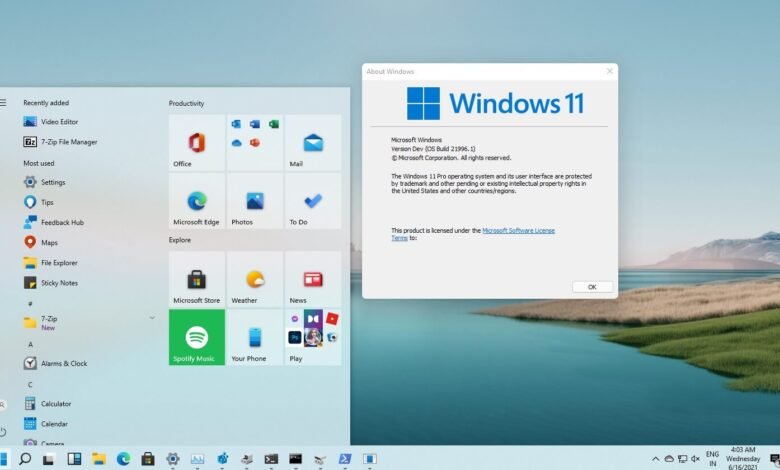Windows 11: The Good the Bad and the Ugly

Windows 11 is the latest operating system from Microsoft that has been generating a lot of buzz since its launch in 2021. The new OS comes with several new features and improvements, but it also has its share of issues. In this article, we’ll explore the good, the Bad and the Ugly aspects of Windows 11 and help you decide if it’s worth upgrading to.
The Good
-
New User Interface
One of the most significant changes in Windows 11 is the revamped user interface. The new UI is sleek, modern, and intuitive, making it easy to navigate and use. The Start menu has been moved to the center of the screen, and the taskbar is more customizable. The new UI also includes several new animations and effects that add a touch of elegance to the user experience.
-
Improved Performance
Windows 11 comes with several performance improvements over its predecessor, Windows 10. The new OS is faster and more responsive, thanks to the optimized code and better utilization of system resources. Apps load faster, and the overall system performance has been improved, especially on low-end devices.
-
Enhanced Security
Windows 11 includes several new security features to protect your device from threats. The new OS comes with enhanced malware protection, secure boot, and improved encryption. The new security features make Windows 11 a safer and more secure operating system.
-
Better Gaming Experience

Windows 11 includes several features to enhance the gaming experience, including Auto HDR, DirectStorage, and Xbox Game Pass integration. Auto HDR enhances the visuals of older games, DirectStorage reduces load times, and Xbox Game Pass gives you access to a vast library of games.
The Bad
-
Compatibility Issues
One of the biggest issues with Windows 11 is compatibility. The new OS requires newer hardware, which means that many older devices are not compatible. Some older devices that are compatible may still have issues with drivers or software compatibility.
-
Limited Customization
Windows 11 comes with a sleek and modern UI, but it also limits customization options. The Start menu is fixed in the center of the screen, and there are limited options to customize the taskbar. Users who prefer a more customized interface may be disappointed with the lack of options.
-
Removal of Some Features
Windows 11 has removed some features that were available in Windows 10, such as Live Tiles and Timeline. These features were popular among some users, and their removal may be disappointing for those who used them regularly.
-
Buggy Updates
Windows 11 has had its fair share of buggy updates, causing issues for some users. Some users have reported issues with sound, Wi-Fi, and Bluetooth after updating to Windows 11. While Microsoft has been working to fix these issues, they can be frustrating for users who rely on their devices for work or personal use.
The Ugly
-
Privacy Concerns
Windows 11 has raised some privacy concerns among users. The new OS collects more data than its predecessor, which has raised concerns among privacy advocates. Some users may not feel comfortable with the amount of data that Windows 11 collects.
-
Forced Updates
Windows 11 has a policy of forced updates, meaning that updates are installed automatically without user input. While this policy ensures that devices are up-to-date with the latest security patches, it can be frustrating for users who prefer to control when updates are installed.
-
Complexity
Windows 11 is a complex operating system, and it may not be suitable for users who are not tech-savvy. The new UI and features may be overwhelming for some users, and the learning curve may be steep for those who are not familiar with Windows.
Read More:How to Fix Common Windows 11 Problems in Minutes
Conclusion:
Windows 11 is a mixed bag. On the one hand, it brings several new features and improvements that enhance the user experience and make the OS faster, more secure, and better for gaming. On the other hand, it also has some issues, such as compatibility problems, limited customization options, and privacy concerns.
If you’re using a newer device that is compatible with Windows 11 and prioritize the latest features and improved performance, then upgrading to Windows 11 is a good idea. However, if you have an older device or prefer more control over customization options or privacy settings, you may want to stick with Windows 10 or consider other alternatives.
In terms of SEO, if you’re writing about Windows 11, it’s essential to cover all the aspects, including the good, the bad, and the ugly, and provide readers with a balanced view of the new OS. Also, using relevant and high-ranking keywords, such as “Windows 11,” “operating system,” and “user interface,” can help boost your article’s search rankings.
Windows 11 has its strengths and weaknesses, and whether you decide to upgrade or not depends on your preferences and requirements. Regardless of your decision, it’s crucial to stay informed and aware of the latest developments and updates in the tech world to make the best choices for your device and needs.











